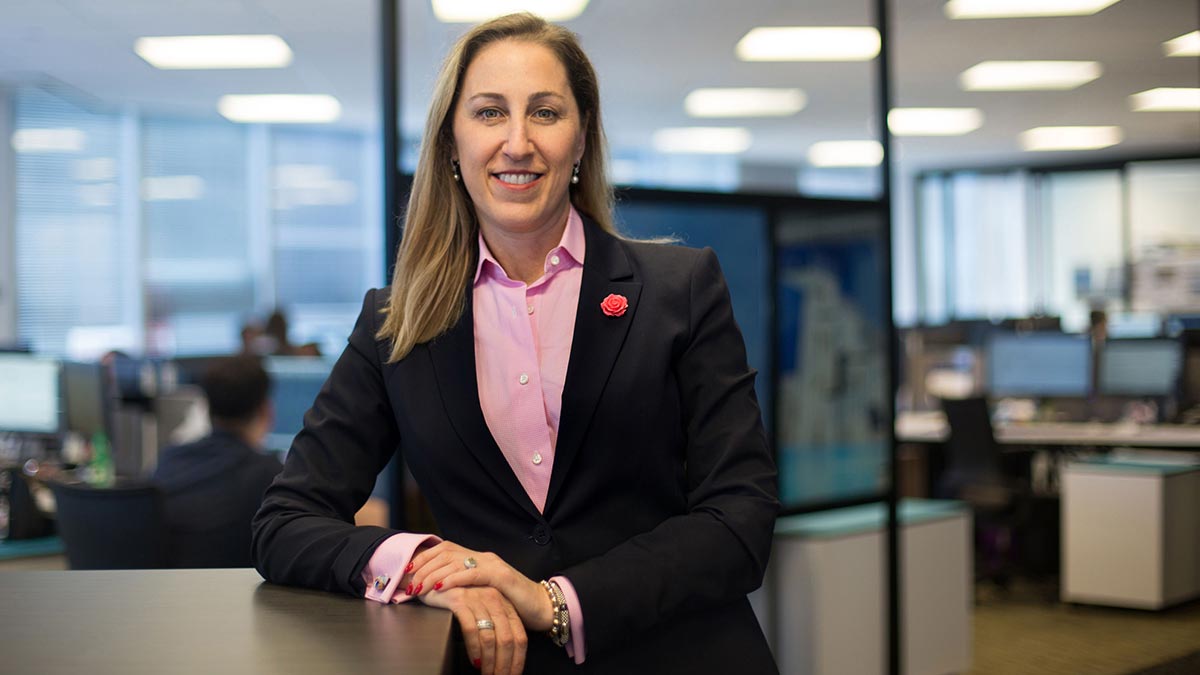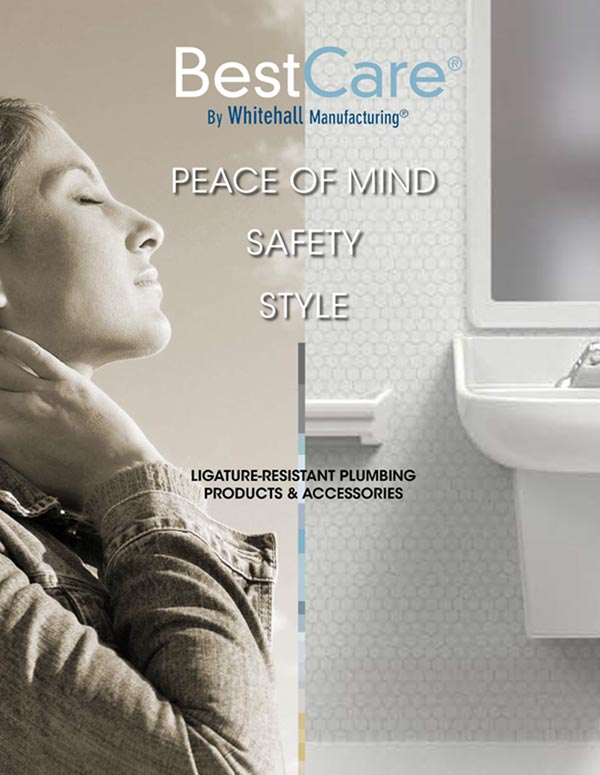
One in every eight emergency department visits in the U.S. are related to mental health and/or substance abuse issues.
Between 2006 and 2014 (the last year for which data is available), such visits increased by 44 percent, and suicidal ideation-related visits grew by nearly 415 percent.
This upward trend is a challenge that Michele Cohen, a Health Sciences Principal, is addressing through her work at NORR Architects & Engineers. While the statistics mentioned above are for the U.S., Cohen said they see the same problem in Canada.
While the Canadian government does provide its citizens with mental health services, Cohen said accessing them could be difficult for several reasons.
“If you are homeless, or you moved to a new city, you may not have a primary care provider to go to. Emergency departments (EDs) become the de facto primary care, which is not great,” said Cohen. “It is the worst place to try to evaluate and treat someone having an urgent mental health issue.”
How to Adapt Emergency Departments for Mental Healthcare
Cohen explained that emergency departments are busy, noisy places that can exacerbate someone’s stress and anxiety, and EDs are both hard to secure and contain a lot of sharp objects.
“Many hospitals [in Canada] are trying to create discrete/discreet mental health zones. We are asking how you get the patient into that zone without disrupting the rest of the hospital, while also giving those patients a sense of dignity and privacy and trying not to stigmatize,” said Cohen.
That’s a tall order considering many patients are being brought into the ED by police and may be restrained. It becomes even more critical when the hospital is in a small town where everyone knows one another.
“Where these units are located, and then the design of the units, is incredibly important,” said Cohen.
Provide Patients with Privacy & Natural Light
Cohen explained that she prefers having them near the ED entryway. This way, staff can quickly move patients away from the chaos of the ED.
Ideally, Cohen said the mental health zone or unit should be near the ambulance or the police intake area and close to triage or the walk-in entrance. She’d also like to locate the unit toward the front of the ED and on an exterior wall if possible. That outer wall provides patients access to daylight. Mental health care typically requires patients to stay in the unit longer than patients in the ER for physical ailments; therefore, access to natural light for psychiatric patients is crucial.
Sounds simple, right? Put the unit adjacent to the ED, on the ground floor, and along the exterior wall. What could go wrong?
Cohen pointed out that this location, while ideal from a care perspective, brings about some design challenges. If the unit is on the exterior wall and has plenty of windows for sunlight, there’s the question of exposure. People passing by can see who is inside the unit. Now and again, a patient will welcome the opportunity for exposure and bare all to those passing. For these reasons, the staff will want to be able to control the patient’s view.
Cohen solves that problem by incorporating integral blinds in the lower half of windows while allowing natural light to enter through the top half. She has also used electrified glass that can go clear at the flick of a switch.
“It’s really important to have that open panel at the top, so patients can see trees, natural daylight (to maintain circadian rhythms), and the normal things you would see in the distance when on the ground floor, while still being protected from exposure.”
Ensure Staff Feel Secure
The patients are not Cohen’s only concern when designing these spaces. “I never forget about the staff,” she said. “You can’t think of patients’ safety without thinking about staff safety. When the staff feels safe and are confident they are not going to be injured, the patients will be safe too. Everyone can take care of each other.”
For Cohen, that means paying attention to good visibility and sightlines—not relying on locked rooms, but instead utilizing weighted furniture to create normalized spaces that are visible from the nursing station.
But safety goes beyond the décor. Take sinks, as an example: Cohen is always trying to create a balance between infection prevention and control with patient and staff safety. Cohen said they usually have one to three sinks, typically located in corridors, for every patient bay. Vitreous china sinks can be jumped on and broken, so she looks for solid surfaces or other materials that cannot be easily destroyed. It’s also important to prevent patients’ ability to clog the sinks with toilet paper or hand towels, causing overflows. Cohen said they often incorporate shut-off valves at the nurses’ stations so they can quickly cut off the water supply should that situation occur.
Another design challenge is providing the right space for patients of different ages. At NORR’s St. Joseph’s Healthcare Centre Mental Health Emergency Service Unit project, they created a swing space. A long stretch along the building’s perimeter is split in half with a door-like barrier. This space separates the adult areas from the adolescent/youth areas, while still providing full visibility into both units from the nursing station. Each space includes an age-appropriate design in both the private rooms and lounge areas.
“Flexibility of space and design is so important,” said Cohen. “You will have situations where they want to keep the children in the lounge, but when tensions rise, they feed off of each other.”
Providing the staff with the ability to control those spaces is essential should a patient escalate.
Cohen designs the space so doctors and staff are closest to the door. In the event of an emergency, the staff will not get cornered or trapped in the room. In an ideal layout, each room has two doors, but that is not always possible; location is an alternative solution.
Normalize Mental Health Spaces Through Design & Décor
Due to the fact that mental health patients typically have longer stays than patients seeking treatment for physical ailments, it’s important to normalize the space as much as possible in addition to providing ample natural light.
Seemingly simple things, such as the ability to get a drink of water without having to ask the staff, require careful attention. Once medically cleared, patients are allowed to eat a regular meal, so the unit must include a dining area—not a typical consideration for an ED!
One of Cohen’s greatest pet peeves is one of the longest-running debates: toilet seat or no toilet seat?
Cohen talked with Frank Pitts, founding partner and president of architecture+, about the perceived issue—that patients will use the seat to harm themselves or others. “Apparently, there haven’t been adverse events—no one’s tried to strangle themselves on a toilet seat or injure a staff member with a toilet seat. I don’t understand why we can’t have toilet seats in mental healthcare,” she said.
Cohen finds that the staff doesn’t like the industrial look of the toilet sans seat, either. Everyone wants safe yet aesthetically pleasing furniture and fixtures.
“I think that’s the most positive thing that’s come out of this lately. The industry has come up with great solutions for behavioral health, which is so encouraging,” remarked Cohen.
Cohen cited innovations such as mirrors with integrated lighting, solid surface countertops with built-in shelving, and grab bars that incorporate a tilted flange instead of a hole in order to prevent water from collecting as positive improvements in product design for behavioral health applications.
Ideally, the environment will provide a sense of calm for everyone involved in the visit, including family members.
“We’ve designed some interview rooms where we have built-in banquettes. It’s safe—there is no loose furniture—you can have a more relaxed environment to talk to family and patients.”
Think Education, Not Corrections
While Cohen is encouraged that the industry listened and then stepped up to create appealing ligature-resistant furniture, fixtures, and accessories, there is still room for improvement. For a long time, mental health has looked to penitentiary solutions for their vandal-resistant qualities, but Cohen finds inspiration somewhere else. “I personally like looking more at education, which is about durability.”
Education’s use of weighted furniture and the fun, colorful options available also appeal to Cohen.
“I think about The Aesthetics of Joy by Ingrid Fetell Lee. Her book is about universal causes for joy, such as color and pattern, and how we make places uplifting for the mind, body, and spirit. That’s how we want these places to be—joyful places for the staff, patients, and their families.”
Cohen said that as the industry continues to make new products, it should consider turning to nature for inspiration. “You can do so many different things, such as a wood pattern or other elements of nature. Bringing that element of biophilic design into the mental health milieu would be fantastic,” said Cohen.
With this concept in mind, NORR has been incorporating murals into the design of mental health units. Cohen explains that the material and process are similar to a bus or car wrap, but it’s pick-proof, inexpensive, and easily replaced if damaged.
In one such case, they incorporated images from a patient photography exhibit. Cohen said returning patients appreciate that personal touch. Because some patients will return several times, NORR includes patients and their families in the design process.
“We engage them in the design and development process and ask them about anything that they’d like to see in the space or what they experienced. We find it important to engage the families,” said Cohen.
Cohen said that, for the most part, they learned that families have just one main priority when they witness their loved ones in mental and even physical pain. They just want to make sure that they’re well cared for and safe. Certainly, ligature-resistant products help keep these patients physically safe, but access to daylight and nature helps to ease the mental anguish they experience.
Looking to the Future
For Cohen, what it all comes down to is the need to recognize that the emergency department is not the best place for behavioral health patients. Still, for now and in the foreseeable future, because of the lack of capacity in mental healthcare delivery systems, the ED is where many mental health patients will continue to go.
Acknowledging this imperfect reality is the first step in working towards a better future. “If we acknowledge that [behavioral health patients will go to the ED], then we need to find ways to create spaces to which we can safely and discreetly move them. Spaces that maintain their dignity and reduce stigma, and then create an atmosphere that allows them to be assessed in safety—safe for the patients and the staff,” Cohen said. “It’s really important that designers and the industry work as partners. That teamwork is needed for architects to complete our design.”
When it comes to what is going into the spaces, Cohen and other architects/designers look to the industry for help. She’s very encouraged by how the industry listens to feedback and comes back with better, safer fixtures.
“It’s really encouraging to see companies like Whitehall that are saying, yes, we can make a difference. We can remove that little metal detail so that it isn’t a ligature point. Those little differences have really made a big change to the spaces. It gives us, as designers, more opportunity to create spaces that are safer and aesthetically more pleasing, instead of looking like a prison.”
Winding Up
To see what Cohen and others are doing at NORR, head on over to their website. And keep your eye out for her at conferences, both online and in person (when those start back up). She is often a speaker or panelist when the topic covers emergency departments and mental health design. She can also be found front and center if the subject is diversity in architecture, as well.
Thanks to Michele Cohen and others like her, emergency departments are becoming safer, more welcoming places for patients arriving in need of mental health treatment. Patients, their families, and staff are better for that attention to detail.

New Year, New Look!
The BestCare® Dignity Suite
You asked for it, we made it: Every fixture and accessory you could possibly want in a bathroom made ligature-resistant.
From the shower head to the floor drain, we can provide patients a comfortable, safe environment while maintaining their dignity as they seek treatment.
